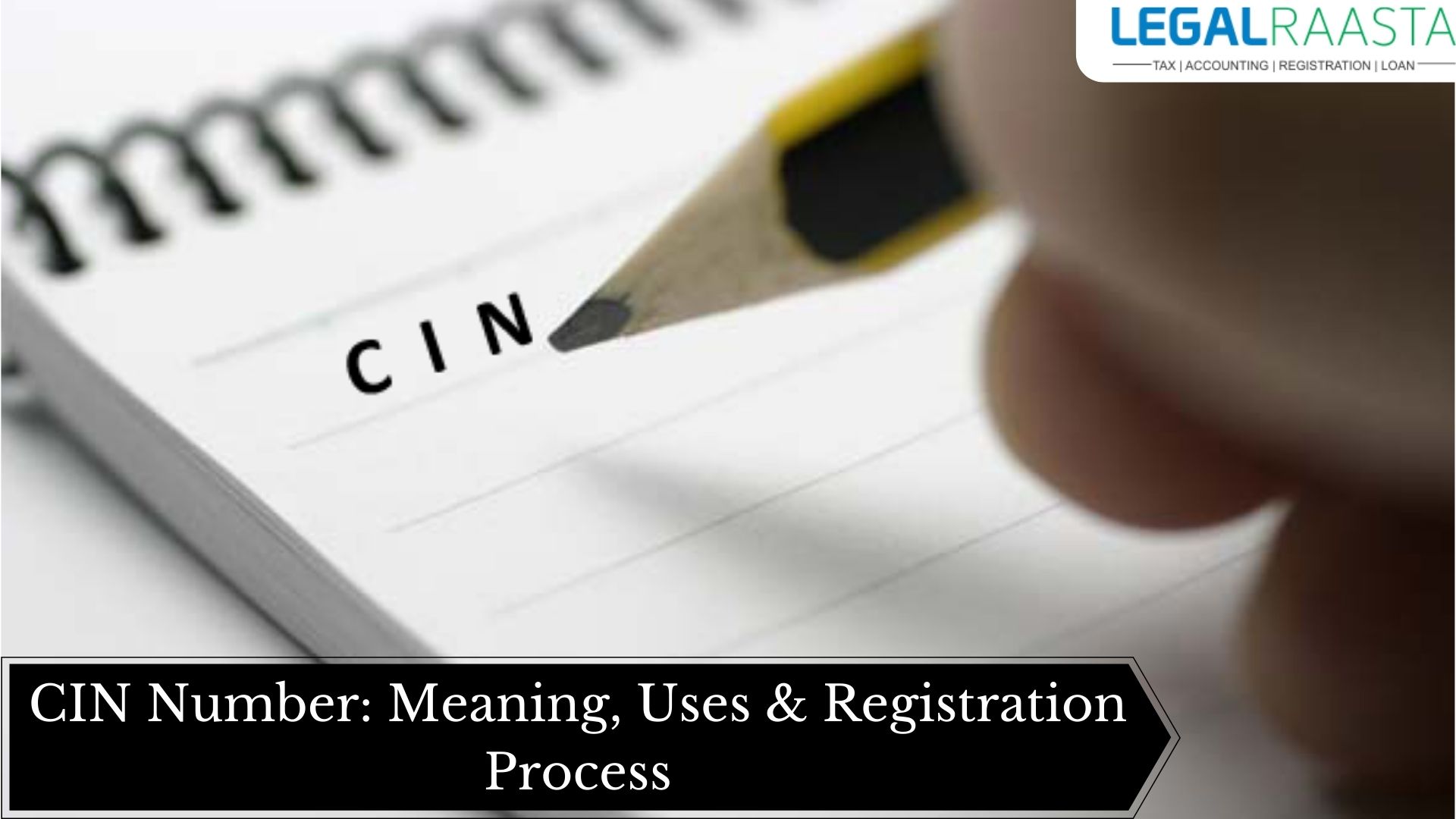CIN Number: Meaning, Uses & Registration Process
CIN or Corporate Identification Number functions like an ID for companies registered in India. It provides a unique identity to the company. CIN Number or Company Identification or Corporate Identity Number can be understood as a unique 21 digit alpha-numeric number provided to all Private Limited Company, Limited Company, One Person Company, Section 8 Company, Nidhi Company and Producer Company that is registered in India.
CIN number is usually used to trace all aspects of the company from incorporation by the Registrar of Companies (ROC) and should be quoted on all transactions along with the Registrar of Companies. This article will provide an insight into the meaning and structuring of CIN Number. Under the authority of the Ministry of Corporate Affairs, the ROC (Registrar of Companies) holds up the responsibility to issue the CIN Number to all the companies that are registered in India.
ROC provides the CIN number to the following:
- Nidhi companies
- One person companies
- Companies that are owned or run by the Central Government
- Public Limited Companies or PLC
- Companies that are owned or run by the State Government
- Private Limited Companies or PTC
- A subsidiary of a Foreign Company or FTC
- Not-for-profit License Companies or NPL
- General Association Private or GAL
- General Association Public or GAP
CIN Number Example Explained
If you have to find out what a CIN number is, you have to study the CIN number itself. Below is the list of components/ elements that together creates the CIN number.
- Listing status: The first alphabetic digit of the CIN number can be ‘L’ or ‘U’. This depicts the company either being “Listed” or “Unlisted”.
- Industry Code: The next 5 numeric digits after the listing status is known as the industry code. These numbers are based on the section, division, class, and group; the company belongs to.
- State Code: The following two alphabets after the industry code are state code.
- Registration Number: The ending six are filled with the registration number of the company.
- Incorporation Year: After the state code, the year of incorporation will be mentioned in 4 digits.
- Ownership Status: The three alphabets that follow the year of incorporation indicate the ownership status. It can be PLC, PTC, NPL, or so on.
Industry Code
The next 5 digits depict the ROC industry code. Various activities have various five-digit codes and it helps to categorize the kind of company that is being registered.
Some of the examples of ROC industry codes that are used in CIN Numbers are listed below:
- General higher education in science, commerce, and humanity: 80301
- Hospitals: 85110
- Manufacturing of electric motors: universal AC/DC motors and DC motors or generators: 31103
- Production, supply, and documentation of ready-made (non-customized) software: 72211
- Manufacturing of all kinds of textile garments and clothing accessories: 18101
- Real estate activities on a fee or contract basis: 70200
- Manufacturing of mineral water: 15543
- Activities of travel agencies and tour operators, tourist assistance activities: 63040
- Farming of cattle, sheep, goats, horses, mules, asses, and hinnies; dairy farming: 01211
- Freight transport by motor vehicles: 60231
- Retail of sale of construction materials: 52341
State Code
The characters in the 7th and 8th place of the CIN Number depict the state of incorporation. A company that is registered in Tamil Nadu will be having the characters TN, on the other hand, a company having a registered office in Maharashtra would have MH in the CIN Number.
Incorporation Year
The number that is 9th to 12th place of the CIN Number consists of the year of incorporation. The CIN Number would change based on the company incorporation date.
Ownership Type
The next three characters after the incorporation year depict the ownership type of the company. For example, PTC stands for private limited company and PLC stands for public limited company.
Registration Number
The six ending digits of the CIN Number is basically the registration number of the company issued by the Registrar of Companies.
Note: LLPs do not generally use CIN. LLP registeration are assigned with LLPIN. Apart from this, a company’s CIN would never be the same as its GSTIN. GSTIN or Goods and Services Identification Number is given to those having GST Registration.
Uses of CIN Number
CIN number is needed by the issuing authority, i.e., ROC as well as the CIN holding organizations. The uses of the number are listed below:
- ROC tracks every aspect, function, and action of the companies that are registered with them with the help of a CIN Number.
- The unique number can be useful for availing of any registered company-related information.
- CIN is also useful while preparing audits and reports of the companies.
- Any form that is to be submitted to the Ministry of Corporate Affairs needs the CIN number.
- CIN Number is specified in the following publications of a company:
- Official publications
- Bills
- Memos
- Letterheads
- Invoices
- Notices
CIN Number Registration Process
According to 7(3) Section of the Companies Act 2013, ROC has the authority to issue the unique 21 digit CIN after the incorporation of a company. The CIN can be obtained through the following steps:
- Go and visit the official online portal of the Ministry of Corporate Affairs or MCA.
- Search for the application form available on the portal.
- Fill in the necessary details in the form. And once you are done with it submit the form with the other necessary documents.
- In the next step, your application form will be reviewed.
- Once MCA approval comes regarding your application, you are required to make the payment in order to receive the CIN.
Although ROC issues the CIN in the name of the companies when the companies are incorporated, sometimes CIN Number needs to be updated or changed. Under the following conditions, the CIN may need some changes.
- In case of a change in the listing status.
- In case of a change in the industry code.
- In case of a change in the state code.
- In case of a change in the ownership status.
- In case of a change in the Registrar of Companies.
Penalty For Non-Compliance
In case the requirements specified above in this article are not met or in case a company does not apply for a CIN, there is a penalty charge of Rs. 1000 per day on the company and each officer and the maximum penalty charge is limited to Rs. 1 lakh.
How can you get a CIN number?
Any company can get a CIN number by simply visiting the official website of MCA. The only thing that the company officials have to do, is fill the form and then submit the required documents. After the approval of the documents, the officials just have to make a payment to receive their number.
Factors that can lead to change in CIN number
- In case of any change in the listing status of the company.
- In case of change in the industry of the company.
- In case of change in the sector of the company.
- In case there is a change in the location or state of the registered office.
Abbreviations used in CIN number
- FLC: Financial Lease Company As Public Limited
- FTC: Subsidiary Of a Foreign Company As a Private Limited Company
- GAP: General Association Public
- GAT: General Association Private
- GOI: Companies Owned By Government Of India
- NPL: Not For Profit License Company
- PLC: Public Limited Company
- PTC: Private Limited Company
- SGC: Companies Owned By State Government
- ULL: Public Limited Company With Unlimited Liability
- ULT: Private Company With Unlimited Liability
We provide all kinds of legal services like Trademark Registration, Company Registration, FSSAI License, and many more. So, contact the expert team of “LegalRaasta”, for a completely smooth and hassle-free process.









